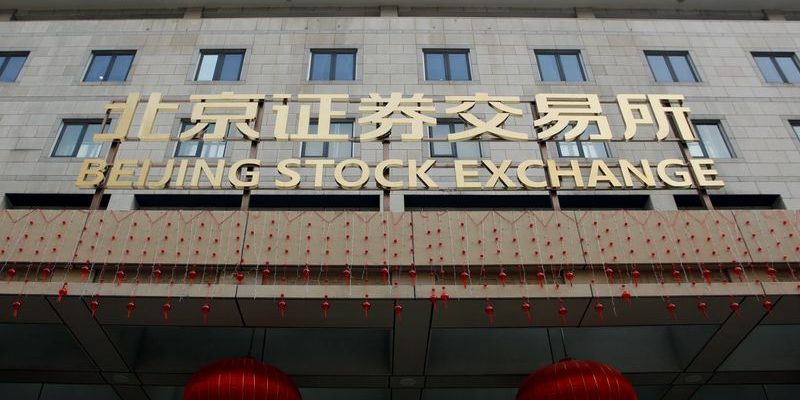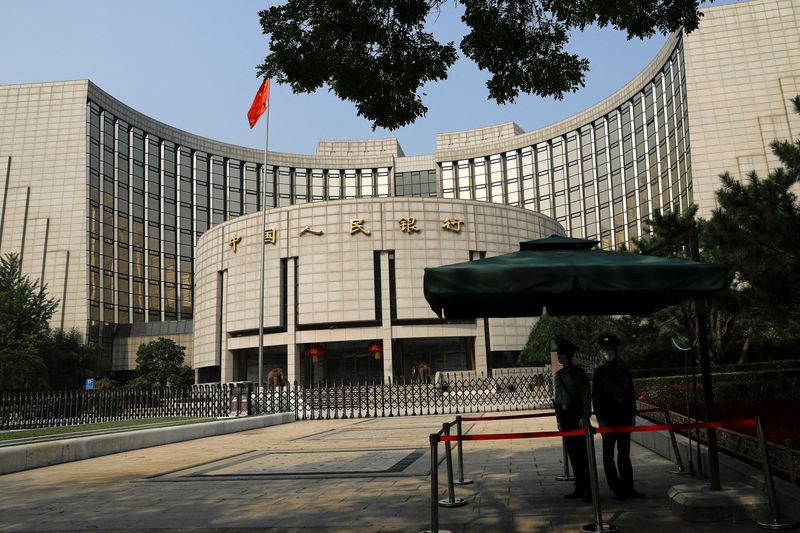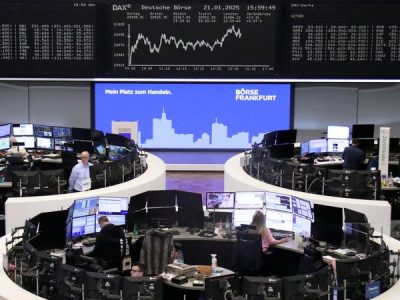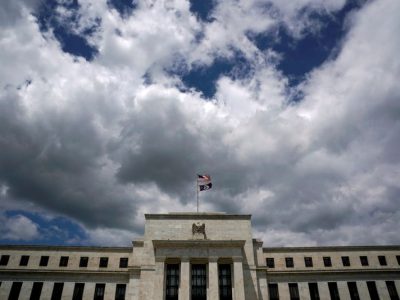
By Stella Qiu
SYDNEY (Reuters) – Chinese stocks are headed for the best week since 2008 as Beijing rolled out a huge stimulus package to revive the economy, lifting Asian shares to 2-1/2-year highs, while a sharp fall in oil prices bodes well for disinflation globally.
The yen retreated to three-week lows ahead of a leadership contest of Japan’s ruling Liberal Democratic Party on Friday, as investors looked to gauge what it could mean for the country’s rate hike path.
In the United States, the core personal consumption expenditures (PCE) price index – the Fed’s preferred measure of inflation – is due later in the day. Forecasts are centred around a small monthly rise of 0.2%, as markets are split on the size of an expected Federal Reserve rate cut in November.
MSCI’s broadest index of Asia-Pacific shares outside Japan gained 1.1% to its highest level since February 2022. It was headed for a weekly gain of 6%, thanks to a huge turnaround in Chinese shares.
China’s blue chips jumped another 2.9%, bringing the weekly rise to 14%, the most since November 2008.
Hong Kong’s Hang Seng index also surged 2.7% and was up 12% for the week, its best performance since 2009.
“Beijing seems finally determined to roll out its bazooka stimulus in rapid succession… Beijing’s recognition of the severe situation of the economy and lack of success in a piecemeal approach should be valued by markets,” said Ting Lu, chief China economist at Nomura.
“But eventually it is still necessary for Beijing to introduce well thought policies to address many of the deep-rooted problems, particularly regarding how to stabilize the property sector, which is now in its fourth year of contraction.”
As flagged, the People’s Bank of China on Friday lowered banks’ reserve requirement ratio by 50 basis points and cut the 7-day reverse repo rate by 20 bps. It also cut the 14-day reverse repo rate by 20 bps, the second reduction this week.
Reuters reported on Thursday that China planned to issue special sovereign bonds worth about 2 trillion yuan ($284.43 billion) this year as part of a fresh fiscal stimulus.
Commodities have had a good week on Chinese stimulus. Iron ore prices rose another 1.8% on Friday to more than $100 a metric ton, copper broke above the key $10,000 a ton mark, gold hit another record, and silver hit a 12-year top.
Oil was a loser and set for heavy weekly losses on a report that Saudi Arabia was preparing to abandon its unofficial price target of $100 a barrel for crude as it gets ready to increase output. [O/R]
Brent futures fell 0.8% to $71.09 a barrel and are down 4.6% for the week. That should be good for global disinflation as central banks ramp up rate cuts, and bullish for consumer spending.
In foreign exchange markets, the yen was the big mover on Friday, with the dollar gaining 0.5% to 145.47 yen. Japan’s LDP, which has a parliamentary majority, will elect a new leader in an unpredictable contest, with the result from the ballot expected around 2:20 p.m. JST (0520 GMT).
“In overly simplistic terms, the three of the front runners have quite different attitudes toward the evolution of fiscal and monetary policy such that the outcome could influence equities, JGBs and the Yen,” said Ray Attril, head of FX research at the National Australia Bank (OTC:NABZY).
Treasury yields were steady in Asia, having risen overnight on low U.S. weekly jobless claims that led markets to lower the odds of another outsized half point rate cut from the Fed in November to 51%, from 57% a day earlier.
Two-year Treasury yields were up 6 bps this week to 3.6287%, while 10-year yields rose 7 bps in the week to 3.7943%.












